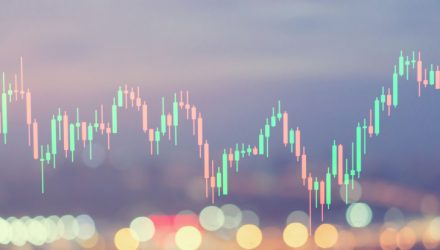A new year brings a frequent question to investment professionals – what is your market outlook for the new year? You don’t have to look very hard to find many willing to answer this question!
Countless attention-seeking headlines attempt to lure in investors with specific market outlooks. The message of these articles usually follows a pattern of “because X will happen, you need to buy Y.” As the years have passed, I read fewer and fewer of these articles and reports. I have learned to readily admit that we don’t know exactly what will happen – markets are uncertain. Some people respond to the reality of uncertainty by claiming nothing can be done by managing investments. In their view, you either avoid investing or if you must invest, you simply own the market. Others believe that admitting to market uncertainty challenges their investment prowess. They respond with breathtakingly precise market predictions.
In between “markets are uncertain so there is nothing you can do in your investment portfolio” and “here is exactly what is going to happen in markets so do this in your investment portfolio” is a middle ground. This middle ground does not attempt to build the perfect portfolio for a specific environment, but rather focuses on building investment portfolios with resilience and adaptability across a variety of market and economic scenarios. This “middle ground” approach requires independent thinking, effort, and homework. As we build resilient and adaptable portfolios in 2022, here are few things we want less of, and a few things we want more of:
Less Noise, More Numbers. Financial media has become increasingly bombastic. Escalating noise around financial markets is a clear threat to making good investment decisions. Noisy markets increase the importance of relying on the actual numbers in the source data. Manipulated statistics or numbers taken out of context are the weapons of choice for many market prognosticators. As Nobel Prize winner Ronald Coase remarked, “If you torture the data long enough, it will confess.” Lazily relying on headlines with eyepopping statistics may result in faulty conclusions. Resilient and adaptable portfolios rely on source data rather than tortured data. Tuning out market noise will be a competitive advantage.
Less Concentration, More Diversification. Diversification has become an investment concept that means different things to different people. Isn’t the S&P 500 diversified? It includes 500 large U.S. companies! Owning the S&P 500 is certainly more diversified than owning just a handful of individual stocks, but the S&P 500 currently has high levels of concentration. In fact, the 10 largest companies in the S&P 500 comprise over 25% of the index! Reducing dependance on this static list of the largest companies may take a variety of forms, including adaptable approaches like Lunt Capital’s factor rotation strategies. Concentration lurks in some unexpected areas of the market landscape. For example, China is the largest geographic allocation in most broad emerging market indexes, funds, and ETFs with approximately 1/3rd or more of the allocation. Diversification may require reducing dependance on popular market benchmarks.
Less Market Risk, More Strategy Risk. Generating investment returns requires taking risk.Most often, this risk-taking is in the form of owning stocks or equities. Owning a basket of stocks (large, small, international, etc.) is frequently referred to as taking market risk. Broadly defined, any movement away from an asset class’s market capitalization-weighted approach introduces strategy risk. Risk is not eliminated by taking strategy risk; it simply changes form. On the spectrum from market risk to strategy risk, most mutual funds are still closer to market risk (more market, less strategy). Some investment managers use ETFs to push further towards strategy on this spectrum by introducing rotation across factors, sectors, or countries (balance between market and strategy). Strategies that move in or out of an asset class, or that hedge an asset class, are closer to the strategy risk end of the spectrum (less market, more strategy). Investors should not move assets from market risk to strategy risk if they are unwilling to allow a strategy to do what it is designed to do—which is look different from the market. The amount allocated to strategy within a portfolio should be driven by the tolerance for underperformance in both magnitude and time relative to where the allocation comes from.
Rather than focusing on building a portfolio around a single market prediction for 2022, we advocate building a portfolio with resilience and adaptability across a variety of market environments and potential shocks (positive and negative). In our view, this will require tuning out market noise and focusing on the actual data. It will require recognizing areas of concentration and embracing increased diversification. Finally, it will require the increasing use of strategies that look different from the market as they rotate, tilt, and hedge within investment portfolios.
A year from now, most of the predictions blanketing today’s financial media will have been forgotten. They will be replaced by a fresh slate of alluring forecasts. Rather than drowning in the market noise, we believe a path for success includes building data-driven, diversified, and strategy-rich investment portfolios.
For more news, information, and strategy, visit the ETF Strategist Channel.

